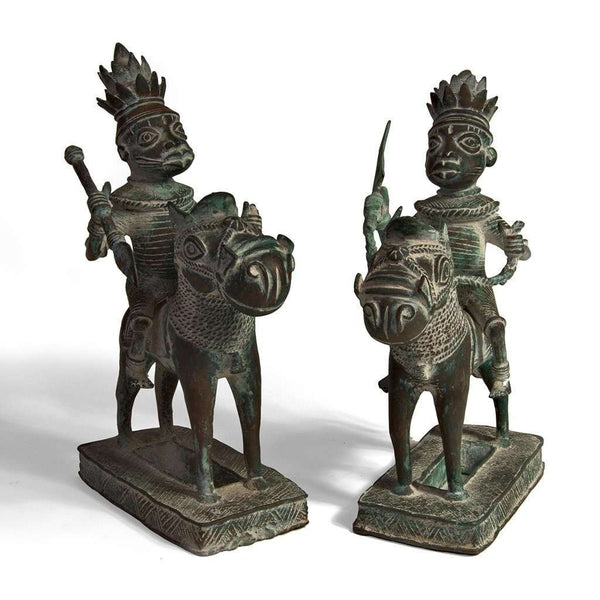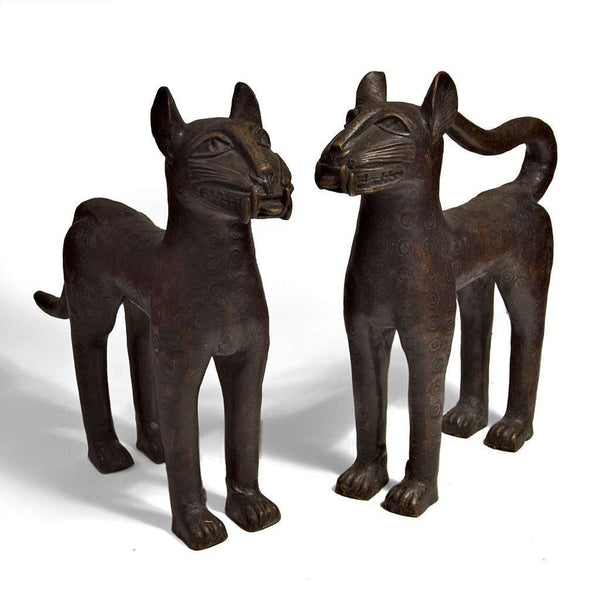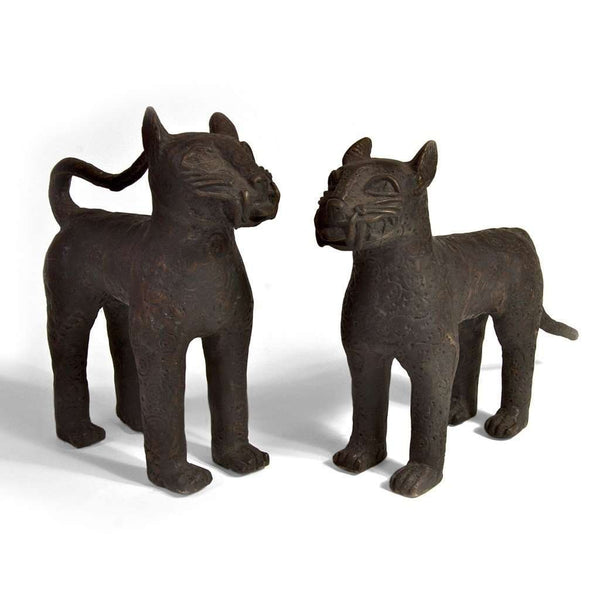West African Vintage Benin Bronze Art
Benin figures from West Africa are more than just sculptures; they are portals to a rich history and a testament to the unparalleled artistry of the Edo people. Cast centuries ago using the lost wax method, these figures once adorned the royal palace of the Oba, the divine king of Benin, encapsulating the power, prestige, and spiritual beliefs of a mighty kingdom. Imagine the Oba's palace, its walls adorned with these magnificent bronze plaques and sculptures, each one narrating a story of royal power, ancestral reverence, and courtly life. These figures depict a variety of subjects, from powerful Obas clad in elaborate regalia to noble courtiers showcasing intricate hairstyles and attire. They portray fearsome warriors brandishing weapons and adorned with protective talismans, as well as mystical creatures, revealing the spiritual beliefs and cosmology of the Edo people.
The creation of these bronze figures was a testament to the ingenuity and skill of Benin artisans. They employed the lost wax method, a complex casting process involving several stages. First, a detailed model was sculpted in wax, capturing every intricate feature. This wax model was then encased in clay to form a mold. The mold was heated, melting the wax and leaving a hollow cavity into which molten bronze was poured. Once cooled, the mold was broken, revealing the bronze figure, which was then meticulously finished and polished.
While the collection is known as the Benin bronzes, like most West African "bronzes" the pieces are mostly made of brass of variable composition. There are also pieces made of mixtures of bronze and brass, of wood, of ceramic, and of ivory, among other materials.
Benin bronze figures are highly sought after by collectors and museums worldwide for several reasons. They offer a rare glimpse into the sophisticated civilization and courtly life of the Benin Kingdom, and the intricate details, expressive features, and technical skill exhibited in these figures are unparalleled. They embody the spiritual beliefs, history, and artistic legacy of the Edo people. Many of these types figures were looted during the British Punitive Expedition of 1897, scattering them across museums and private collections globally, making them even more rare and valuable. Owning a Benin bronze figure is not just acquiring a piece of art; it's possessing a tangible link to a powerful kingdom and a testament to the enduring legacy of African artistry.



